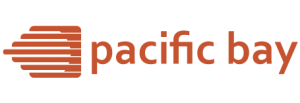From Berlin to Bavaria: IPTV Boosts Local Channels and German Storytelling
Germany’s media map stretches far beyond the flagship studios of Cologne or Munich. Regional culture blossoms through dialect news bulletins, community theatre broadcasts, and local sports fixtures. Yet these programs often struggled for shelf space on national cable grids. IPTV changes that equation by breaking the tyranny of limited transponder or analogue bandwidth. This final article explores how IP‑delivered television supports local identity, creative experimentation, and media pluralism across the Federal Republic.
Re‑Imagining Regional Windows
Public broadcasters ARD and ZDF traditionally carve out short regional “Fenster” slots, but IPTV’s flexible channel line‑up allows entire 24‑hour streams for every Land. In Saxony‑Anhalt, MDR’s dedicated feed covers everything from folk music festivals to start‑ups in Magdeburg’s science park. Viewers in Hamburg can switch to NDR’s city‑station feed without losing access to national news—merely another item in a scrollable guide. Because capacity concerns disappear, these local windows no longer jostle against national flagships.
Cost‑Effective Distribution for Independent Producers
An indie documentary crew in Freiburg once faced five‑figure satellite uplink fees. IPTV carriage frees them from that burden. Platforms such as IPTV Deutsch or Zattoo offer “channel as a service” tiers where producers upload content and receive a full linear playout, complete with catch‑up, for a monthly fee comparable to office rent. The new economics encourage projects that cater to smaller audiences—Black Forest cuisine tutorials or Swabian dialect comedy—that would never meet the ad‑revenue thresholds of conventional broadcasters.
Audience Participation and Hyper‑Local Journalism
IPTV supports live polling, viewer call‑ins routed via Voice‑over‑IP, and instant clip submission from smartphones. Local stations harness those tools to cover village fairs or council meetings with crowd‑sourced footage, increasing transparency. Citizens who once wrote letters to the editor can now see their short video questions aired within minutes, shortening the feedback loop and nurturing civic engagement.
Education and Minority Language Preservation
German education ministries champion bilingual learning, and IPTV offers a distribution outlet for Sorbian or Frisian lesson blocks that might otherwise lack airtime. Because the same infrastructure carries mainstream channels, schools need no special decoder—just a Smart TV or tablet. Parents stream the lessons at home, reinforcing classroom progress. Linguists regard such visibility as a lifeline for dialects under demographic pressure.
Tourism Promotion and Economic Spill‑Over
Tourist boards in the Harz mountains or the Baltic coast sponsor seasonal IPTV segments showcasing hiking trails or beach webcams. When a Swiss family plans a holiday, they can watch a high‑definition walk‑through of their chosen region rather than rely on static brochures. The upgraded exposure converts into visitor nights, creating local jobs that sustain rural economies.
Safeguarding Cultural Plurality
Germany’s foundational Medienstaatsvertrag emphasises viewpoint diversity. IPTV helps by lowering entry thresholds: religious broadcasters, migrant‑community channels, and youth collectives can all secure EPG slots. As a result, a subscriber in Frankfurt may watch a Turkish‑language community debate followed by a Hessian cabaret performance on the same service. Exposure to multiple voices strengthens social cohesion and keeps national discourse broad.
Economic Models That Reward Creativity
Tip‑jar micro‑payments, QR‑code donations, and targeted regional advertising open new revenue paths. A bakery in Bamberg can sponsor a local cooking show for a fraction of the cost of regional satellite adverts, yet still reach the precise postcode where its customers live. Revenue stays inside the district rather than flowing to large national sales houses, nourishing local creative ecosystems.
Technological Accessibility
Because IPTV runs on common devices, residents of senior homes or student dormitories access the same local content without extra cables. Set‑top‑box UIs offer disability‑friendly modes with larger text or voice navigation, ensuring that inclusion extends to the technically cautious. For the first time, community theatre from Lübeck can reach viewers with impaired sight thanks to audio‑description tracks embedded in the stream.
Looking Forward
As fibre networks blanket Germany, regional broadcasters will gain even more freedom to experiment with ultra‑high‑definition, pop‑up event channels, and interactive town‑hall debates. What once required nationwide ad money or federal subsidies now blooms from grassroots initiative. IPTV, therefore, not only satisfies entertainment cravings but also strengthens the cultural ties that stitch German society together—one local story at a time.



Leave a Reply
Want to join the discussion?Feel free to contribute!